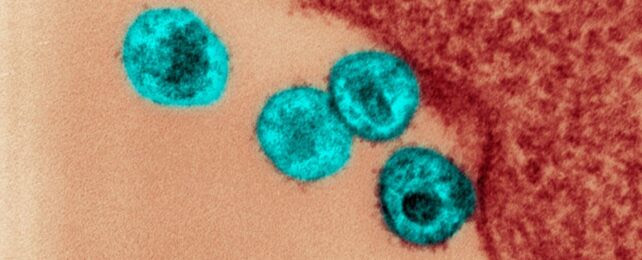21 February 2023 By CARLY CASSELLA

(Callista Images/Getty Images)
A high-risk stem cell transplant has rid a middle-aged man of any signs of the human immunodeficiency virus ( HIV) more than nine years after treatment.
The so-called ‘Düsseldorf patient’ was diagnosed with HIV in 2008, and put on a course of antiretroviral treatments in 2010. The following year, he was diagnosed with leukemia, which is a cancer of white blood cells in the bone marrow.
Given the serious combination of the man’s illnesses, doctors decided to take a dangerous route.
In 2013, the patient underwent a stem cell transplant, which takes stem cells from the bone marrow or blood of a donor and uses the sample to replace a sick patient’s own white blood cells.
In this case, however, the donor was selected because they had a genetic mutation that makes them resistant to HIV. The idea was to cure the patient’s leukemia, while, at the same time, giving them a genetic-based resistance to HIV.
Nine years after receiving this initial treatment and four years after ceasing to use antiviral treatments, researchers have announced the patient displays no signs of functional, replicating HIV particles in his body, effectively making him virus free.
The Düsseldorf patient was the third patient to have received this type of stem cell transplant.
And though there is no clear line between cured and infectious, the Düsseldorf patient joins four other stem cell recipients researchers are confident have had all traces of functional HIV genomes removed from their body.
The other patients have been dubbed the City of Hope, the London, the New York, and the Berlin patients.
The word ‘cure’ is in quote marks, because it comes with some serious caveats.
HIV is one of the trickiest viruses for experts to treat. It has a way of lying latent in the body, beyond the reach of the immune system or modern medicines.
Stem cell treatments for cancer like the one detailed above are incredible because they can make immune cells resistant to the virus present.
At the same time, however, they are also potentially fatal and do not always work, not even for leukemia. Currently, they are only used as a last resort and in extreme cases.
That said, the way that some patients are cured by this cutting-edge intervention could “inform future strategies for achieving long-term remission of HIV-1,” write researchers from Düsseldorf University Hospital in Germany.
A handful more HIV cases have even been controlled without any stem cell treatments at all.
These patients were able to stop taking anti-retroviral treatments and still maintain low to no evidence of the virus in their system.
Why that is remains unclear, but clinical trials are revealing some possible avenues for a cure.
In 2022, for instance, a common cancer drug was found to ‘coax’ latent HIV out into the open.
The drug didn’t ‘eradicate’ HIV among patients, but its success does suggest there are ways to tweak the immune system so it’s better able to cope with the long-lasting virus.
Stories like those of the Düsseldorf patient give scientists hope for the future. It’s evidently possible to eradicate HIV, now we just need to figure out how to make it work for everyone who needs it.
The study was published in Nature Medicine.

Leave a Reply